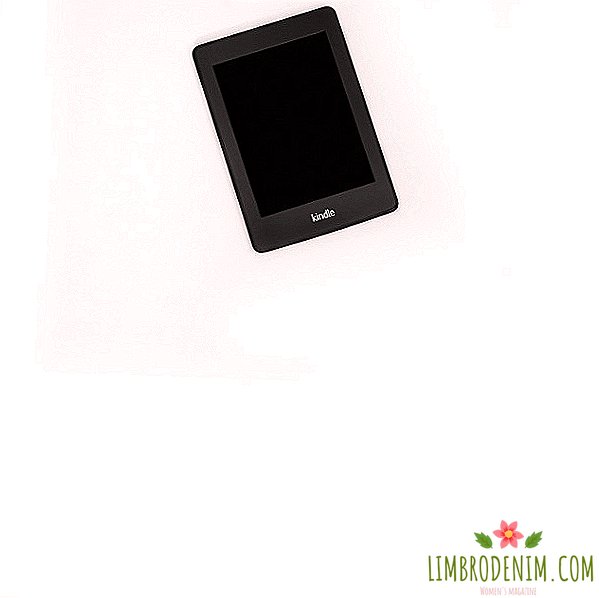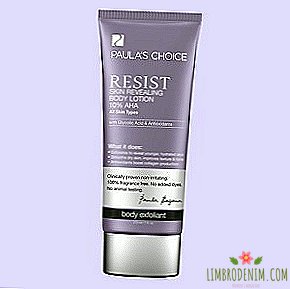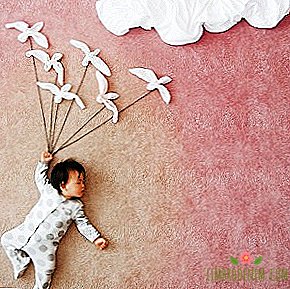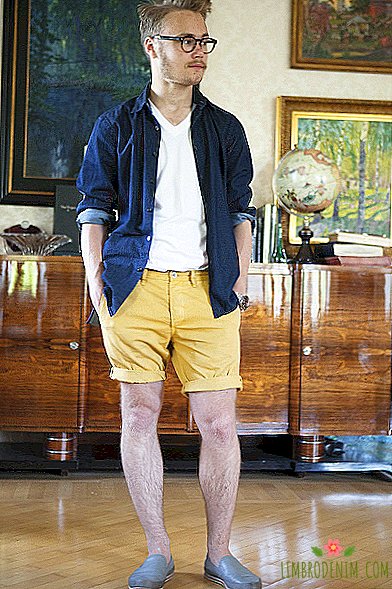Useless Suite: Why do we need the Raf Simons tape and the Prada clip
If you believe the marketing departments of luxury brands, in 2017, every self-respecting millennial does not think of life without adhesive tape for $ 200, paper clips for $ 185, and a grinder of about the same price category. Of course, all the above-mentioned things of prime necessity should not be some kind of "plebeian nounayim", but certainly authorship of a fashion brand - Raf Simons, Prada and Vetements, for example. This is not the fruit of someone's violent fantasy, but the real situation on the market here and now.
Over the past week and a half, we learned that we can now please ourselves with a tin can, cocktail straws and silver rulers from Tiffany & Co., Hermes stone paperweight for $ 840, an ashtray and a roll-up paper Alexander Wang and a perfume case for 500 euros from Louis Vuitton. The cherry on the cake is the freshest collaboration between Carhartt and the Russian skate brand Absurd, which, among other things, includes a set of stainless steel skewers in a special branded case. Is this collective insanity, or have we just missed important changes in the structure of the fashion business? Let's try to figure it out.

Practically for any large brand, the sale of clothing is not the main source of income, and this trend is by no means new. In the luxury industry, there is the notion of an entry-level product — a product that is cheaper than the main brand assortment, but at the same time reflects its identity and, in the language of marketing, allows the buyer to feel involved in the brand.
For a long time, the role of such an introductory product was performed by perfumery products — inexpensive to produce in relation to clothing. The first couturier, who came up with the idea of combining haute couture and perfumery under his name was Paul Poiret - in 1910 he introduced the aroma of Coupe d'Or. Over the next 15 years, he released 36 flavors (including Fruit Defendu, which was released during the First World War and, despite criticism of Poiret, who brought very good profits) and initiated the phenomenon of designer perfumery. While customers of couture fashion houses wore expensive perfumes from Chanel and Lanvin, the less well-to-do public was content with their counterparts in the eau de cologne format — not so durable and refined, but more accessible. In the 1930s, brands invented making even more democratic versions of their popular fragrances - eau de toilette, toilet water. The price of such a product was appropriate, the quality too, but who cares if from now on practically anyone could touch, albeit very indirectly, the world of high fashion?
In the mid-1980s, Bernard Arno, who at that time was just beginning to build his LVMH empire, saw a gold mine in brand perfumery. In 1985 he bought Dior, and one of the points for his rehabilitation was the development of perfumery. For comparison: over 40 years of existence of a fashion house, 12 fragrances were released, in the first 20 years under the auspices of Arno - more than 30. Big bosses of fashion business quickly realized that perfumery and beauty products are much more profitable than haute couture, and whole The catwalk shows, and especially the haute couture collection, increasingly began to resemble promotions aimed at selling those very cherished entry-level products: Arnaud and his colleagues were ready to spend a lot of money on spectacular shows so that the audience charmed with the magic of the brand wanted to buy a bottle with a cherished logo.


Entry-level product is cheaper than the main range, but allows the buyer to feel involved in the brand
Towards the end of the 1990s, the focus gradually began to shift towards another “trial product” - handbags and small leather goods. The fact that the cost of a bag is on average higher or equal to the cost of the clothes of the same brand confused very few people: as soon as the fashion industry started selling not so much things as image, the demand for status accessories increased dramatically. No wonder - you just have to put on a monogrammed belt or pick up a handbag decorated with a logo, it will immediately become clear to everyone around you - you can afford it. As it turned out, the brand of such a product is even more profitable than in the case of perfume - most luxury brands can make a profit of 10 or even 12 times more than the cost.
Glossy magazines (of course, at the suggestion of advertisers) only added fuel to the fire of ado, every now and then telling about how profitable the investment would be to buy a designer bag - yes, such a thing is not cheap, but it will last a long time and will pay off. Those to whom finances did not allow such luxury could find solace in pleasant trifles like a purse, a belt or a key ring - naturally branded. Over time, fashionable brands a level lower joined the mastodons of the industry, who nevertheless were able to create a real cult around their entry-level products - Michael Kors, of course, who first built his multimillion-dollar business, not least of all, on the bags and watches affordable prices. Or remember Proenza Schouler - Jack McCullough and Lazaro Hernandez launched the brand in 2002, but only 6 years after the release of the PS1 debut model, they caught a really big jackpot (by the way, the same story - and the same year - happened to Alexander Wang).
However, by the mid-2010s, the situation on the luxury bags market was becoming less rosy. If from 2000 to 2004, the profit indicators in this segment grew by an average of 7.5% every year, then at the end of 2016, forecasts for the near future were 1-2%. Analysts and business consultants have argued that today's young buyers - the main target audience of the suite - are much less willing to spend on status bags and more likely to buy some cool jewelry or shoes (read - new sneakers).
Feeling the decline in demand, brands themselves slowed down their production volumes - for the last 3 months of 2016, Prada and Louis Vuitton released 35% fewer new models of bags than in the previous quarter, and Michael Kors - 24% less. This is partly due to the overall decline in the luxury market turnovers, due to the crisis, the unstable exchange rate and other economic perturbations.

But there is one more important argument - the attention of the millennials and representatives of the generation Z with the release of a regular bag or fur keyring will no longer attract. The old worked out schemes at some point simply ceased to work, and for brands it became obvious that new, more sophisticated methods are needed.
In early summer, Balenciaga specifically for the Paris department store Colette released a series of branded 10-euro lighters (and even sleep masks, however, they caused less excitement). The genius of this marketing move is hard not to appreciate: a lighter is a thing that should always be at hand, 10 euros is a price for a designer (albeit conditionally) funny thing, lunch at a restaurant will cost more. Naturally, fans of the brand, who can afford such a trinket, are much more than those who buy a bag-package for $ 1,100.
As expected, the lighters by Demny Gvasalia flew like hot cakes in a matter of days. The same story with Raf Simons - you can hardly ever fork out for a coat for 1300 euros, but you can buy an adhesive tape with the inscription "Walk with Me" or "Youth Project" four times cheaper, wind it around a penny coat from Zara and get onions from the show of Simons. When Prada released the release of its branded clip at the end of June, which will be sold exclusively through Barney's online store in New York, the Internet exploded in outraged tweets and memes - is it such a subtle trolling? You will laugh, but the clips have been cleaned up, even they cannot be found on eBay.
Some people regard such antics as a mockery of luxury consumers in the spirit of the artist’s “Shit” action by Piero Manzoni. Among the industry workers, there is even a joke - they say, next time brands will simply offer us to buy the air that the designer breathed for a couple of hundred dollars. So, last year's news on Supreme brick for $ 30 passes just along the thin line between ingenious marketing and frank mockery - by the way, the guys began to produce lighters, plotters and pill boxes for ecstasy long before Gvasalia, Wang and their ilk.


When Prada released its branded clip release, the internet exploded in outraged tweets.
Others see this kind of potential in luxury niches for luxury companies, which have to constantly surprise a potential Z-buyer and support the idea that the brand today is not so much about clothes, but about the history and lifestyle. If Hermes promotes its own art of living, releasing a variety of products for the home, from wallpaper and pillows to a stone paperweight, why Tiffany & Co. or Alexander Wang can not do something like this for their audience? In the end, a silver pencil sharpener and a set of shots for shots are not as crazy as a stone in a leather case for $ 85 apiece. Yes, and consumer priorities have changed - instead of a very expensive boring bag that will serve faithfully for several years, the vigorous millenial will rather buy some funny useless thing that can be put on Instagram for the joy of followers and abandoned in a couple of weeks.
A year and a half ago, the Wars portal released an analytical article based on a recent report by consulting firm Bain & Company, which said that for profit growth, luxury brands should seriously consider developing the direction of entry-level products. Experts put this item on par with the need to revise pricing in strategically important markets such as China and develop the concept of storytelling to attract new customers.
Well, it seems, the fashion industry has decided to take on the matter with all seriousness - one can only guess that designers and marketers will come up with the next time to raise a hyip and make a hundred or two thousand dollars - and likes in social networks. Monogrammed shower cap with Louis Vuitton? Hermes size XXL trash bags? However, we can hardly be surprised by something.
Photo: Trendfuse, Louis Vuitton, Alexander Wang, The RealReal, RSVP Gallery, Nordstrom





